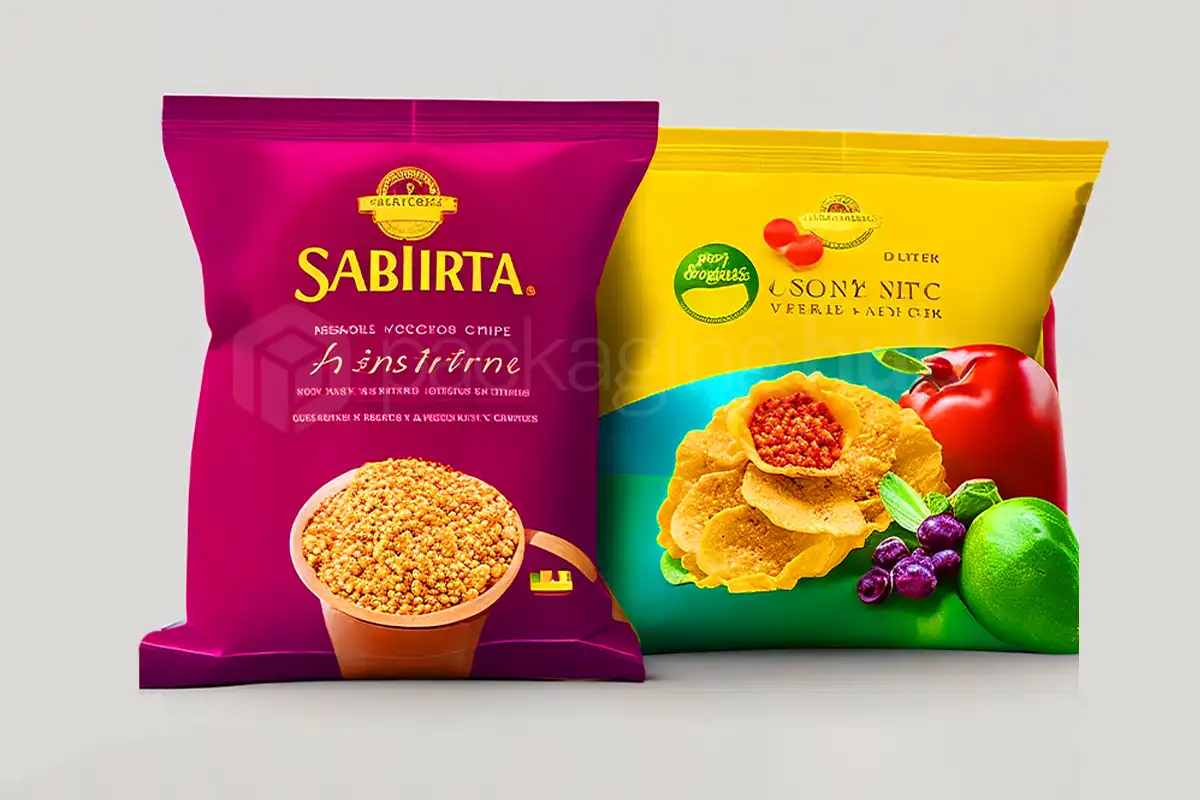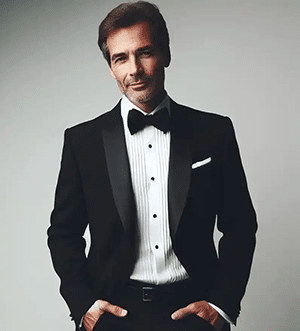Home » Blog » Key Differences Between CPG And FMCG Packaging

Last Updated on February 25, 2025 by
Are you looking to learn the difference between CPG and FMCG packaging? This blog will help you learn about the key differences between the two. We will discuss what CPG packaging is and what FMCG packaging is.
At the same time, we will learn about the packaging design, features, and marketing of the two. We’ll also discuss the similarities between the two alongside their promotion methods. So, let’s start it!
Table of Contents
ToggleWhen it comes to CPG packaging, here are some points you need to know about them:
When we talk about FMCG packaging, we talk about daily-use household items that must be convenient. At the same time, they should offer good portability, easy handling, and the ability to be used on the go. The use of these materials helps you with smaller sizes and lighter materials.
FMCG products move more frequently than CPG products. The difference is how quickly FMCG products are consumed and replenished on a regular basis compared to CPG products.
To understand CPG packaging, you must find different examples of such products. Here’s a list of CPG products to help you understand what kind of category it is alongside its products:
Doing different categories of CPG products can also enhance your knowledge about what packaging would work for them. There’s a long list of categories that come under the CPG umbrella and are used in the United States:
To make sure that you get the best features of such packaging, you should ensure you know these benefits from it:
Here are some key differences between FMCG and CPG product packaging that include multiple points:
When we compare the focus of FMCG products, we see that they are the ones that sell quickly, and the packaging must be flexible. This flexibility allows companies to handle frequent production changes of these products. At the same time, they follow established formats in terms of packaging for faster production.
On the other hand, CPG products are more flexible and have a wider range of sale speeds. This type gives you more freedom in packaging design, like unique shapes and materials. With these products, you can innovate more and come up with new ideas.
In FMCG products you need to make sure that you keep the packaging costs low as they sell rapidly. At the same time, you need to make sure you protect the product through its short shelf life.
On the other hand, CPG packaging is more flexible and aligned with the brand image. At the same time, you can try using sustainable materials for their packaging.
When it comes to marketing and branding FMCG products, they grab attention more quickly with colors and clear product images. At the same time, such packaging uses concise language and highlights its features for impulse purchases.
CPG packaging would carry a stronger brand storytelling with imagery, colors, and text that evoke emotions.
The key difference between FMCG and CPG product packaging is the focus they carry. For instance FMCG products are smaller in sizes frequent purchase is encouraged through the boxes. At the same time these boxes reduce storage space required. Also, you use them for single serve options for on-the-go consumption and portion control.
Most of these packaging designs have single-serve options with resealability that extend their freshness and use. Due to their focus on easy-open features, they also offer tier-away tops and pump dispensers.
On the other hand, CPG packaging has sturdier materials with larger sizes and durability against damage through storage and handling.
When it comes to FMCG products, the packaging is supposed to be fast-moving and prioritize freshness. At the same time, modified atmosphere packaging is used to extend shelf life. Also, they offer simpler designs with thinner packaging, such as plastics.
In FMCG packaging, we emphasize cost-effectiveness with functionality. At the same time, they have a high production volume and potential product margins. On the other hand, CPG material options are wider.
When it comes to the shelf life of CPG packaging, they have a wider shelf-life range as they are intended for immediate consumption. As CPG products have shorter shelf life, they need breathable packaging materials.
On the other hand, products with longer shelf life may need something. CPG packaging may come with barrier properties and sensitivity. On the other hand, they can have sustainable options.
When it comes to why this type of packaging plays a crucial role, you need to make sure you understand why these matter. Here is a list of things you should know to understand why they matter:
Multiple factors influence consumers’ buying decisions. Things like the colors used and the information you provide can define your products. At the same time, using a certain visual hierarchy matters for your brand and the products. Some technicalities like the focal point, brightness, and symmetry matter a lot.
When you use a certain image, color, or other element, the most prominent element of your packaging can make a difference. At the same time, the size and contrast of your design can make a huge impact. The use of fonts and text can also make a great difference, as a fun font would work for a casual brand.
On the other hand, your font sophistication would make your brand look luxurious. At the same time, the use of unique shapes and textures can improve the attractiveness of your products.
When it comes to the different features of such packaging, you need to keep in mind that the different parties involved should be a priority. Some features that such boxes should have for consumers are:
FMCG packaging is used for a certain purpose, and you can use it with certain features. In this section, you will learn about the features that matter to consumers:
On the other hand, in CPG products you can priorotize brand identity and values. In this case you also make sure that you target a specific demographic as they cater to a wider range of needs. This type of packaging also emphasizes on premium quality Luxury and a high-end feel.
Retailers are an important part of the cycle in CPG packaging, so you need to remember that you serve them best. Here’s what you need to keep in mind:
These features would allow you as a retailer to sell your products more easily by increasing sales rates and improving the consumers’ experience. So, try them to make your products stand out to your customers as a retailer.
When it comes to FMCG packaging features for retailers, you should make sure that they are grab-and-go friendly. As a retailer, you need eye-catching products to help your customers make a quick decision. That is why they need to stand out from the crowd. Also, you should make sure that they have the communication and may get convenience.
Apart from the general features of any CPG packaging, you also need to have some features for the manufacturers and distributors. Your packaging should offer these features to make them stand out:
You also need to add functionality and convenience as a manufacturer or distributor of such products. They need to be easy to open, use, and dispose of.
Their counterparts normally have a wider range of design options like statics and the use of sustainable materials alongside diversity.
These features of this type of packaging also matter to the regulatory bodies. For instance:
These features of CPG packaging can surely positively impact your sales brand image, perceived value, and compliance with rules and regulations.
The use of the right materials for your packaging can be a big solution for any product. The same goes for CPG packaging. That is why we have some materials for such products:
Some things apply to both FMCG and CPG packaging. In the next section, we will discuss best practices, the sensory experience of the products, and the choice psychology of these.
The use of best practices can help you get results in any field, so you should make sure you utilize best practices when selling these products as well. Here are some top best practices you should utilize when packaging CPG packaging:
The use of sensory experiences on your shelves to make a better experience for your customers and potential buyers. For instance, the material of your packaging matters as it can add multiple finishes to your boxes. You can also try using tactile surprises like soft coatings and woven materials.
At the same time, you can utilize a certain type of scent to enhance the appeal of your packaging and products.
You can also try using different sounds to ensure your customers get satisfaction from them. For instance, you can try using a crisp seal-breaking sound to satisfy our customers during an unboxing video. The sound of a food item, like the crunch sound of a serial box, can be a comforting and satisfying point you can utilize.
The information you print on your packaging can make a huge difference between a selling product and an unknown selling product. You should have a complete hierarchy of information to attract your customers, and this is where you need to make a decision. Try to understand what matters most for your customers and present that information first with a better presentation.
Using icons and pictograms can communicate a lot, so you should use them.
The method you use to improve your products’ authentication and perceived quality can make a big difference. For instance, you can try using certifications, such as those from regulatory bodies and international organizations, to influence purchase decisions.
At the same time, you should use quality indicators in your products, like subtle designs, labeling, and crisp fonts.
There’s a long list of Technologies that work in CPG and FMCG industries, like:
When it comes to similarities between the two, both use some features. For instance, FMCG products use a premium feel. At the same time, both of these product types use personalization to target a certain type of audience.
Also, you need to understand your consumers’ needs. These fields are also using track and trace systems to improve their supply chain and produce product quality.
When it comes to FMCG packaging, it prioritizes convenience and speed with resealability, portion control, and ease of use. On the other hand, CPG packaging offers temperamental features, multiple-use functionality alongside aesthetics and shelf appeal.
Here are some common practices you can have between FMCG and CPG packaging in terms of technologies and trends:
In CPG packaging, you add storytelling and make your product look more premium, with good differentiation compared to FMCG packaging. At the same time, FMCG packaging carries brand recognition with simple and direct communication.
When we compare the two regarding regulations, we see that they need to follow CPG products, which normally face stricter regulations. The reason behind this issue is their potential health claims and their nature. These product types must follow the FDA and other US agencies’ regulations.
FMCG packaging has lower margins and higher production volumes, which makes low packaging costs crucial. At the same time, FMCG packaging materials must follow affordability and functionality.
Packaging Hub can bring you the most impressive packaging solutions, with a large range available for industries. We take care of our customers’ needs to help them get the best boxes for their sales and branding. Order your boxes now, and you can make sure that you get the best products without having to worry about any problems.

Order your stylish and durable custom boxes and packaging from a team of industry experts.